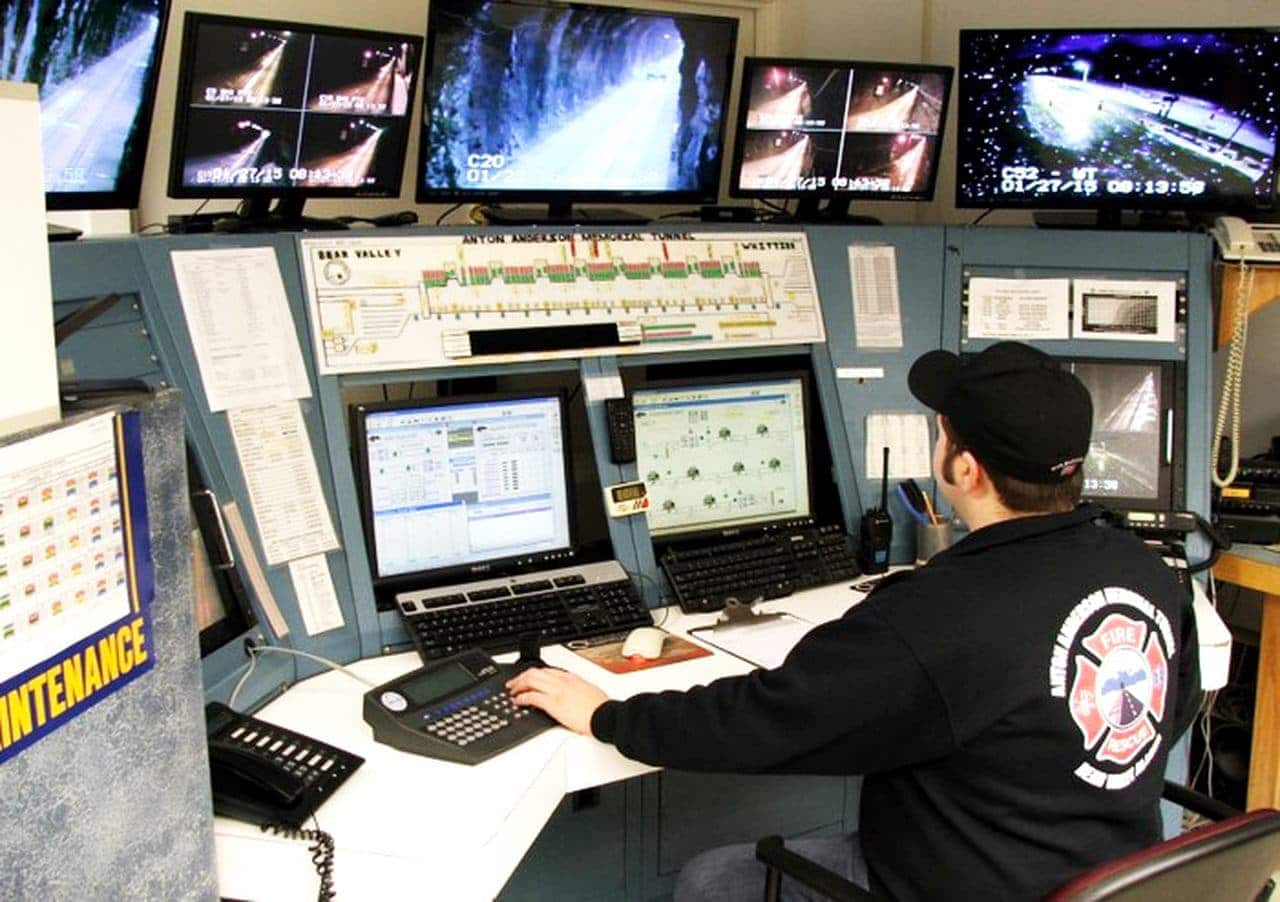Ferrovial Services employees double as firefighters at dual-use tunnel.
Memorial Tunnel from Alaska’s Department of Transportation and Public Facilities in 2000, the year it opened to vehicular traffic after conversion from a 1943 railroad tunnel. The contract includes traffic control, emergency response, toll collection and maintenance.
The one-lane tunnel is shared by cars and trains traveling in both directions between the port city of Whittier on Prince William Sound and Seward Highway. This unique design enables a single lane of traffic to travel directly over the railroad track. Pennsylvania and Washington have dual-use tunnels for light rail and city buses, but not standard automobiles. Non-standard barely begins to describe the longest [2.5 miles] combined rail and highway-use tunnel in North America, the first U.S. tunnel with jet turbine and portal-fan ventilation, and the first tunnel designed for temperatures down to -40 degrees Fahrenheit and wind speeds up to 150 miles-per-hour.

The Tunnel Control Center also manages the flow of traffic using a Supervisory Control and Data Acquisition (SCADA) computer to control traffic lights that release traffic from staging areas on either side of the tunnel. Tunnel Operators also use the SCADA to open the large overhead doors at the entrance to the tunnel, monitor air quality inside the tunnel, observe conditions using 60 video cameras and monitor traffic flow. The tunnel is in operation every day of the year but closes to traffic from 11 p.m. to 6 a.m. for maintenance.
Due to the tunnel’s remote location, the project site has its own official fire department accredited with the State of Alaska. A fire truck, six-wheeler and four-wheeler with firefighting and emergency response equipment are stationed at each end of the tunnel, which means six different vehicles can respond at any time simultaneously.
This is probably the most non-standard project within our company
It is complicated; there are a lot of moving pieces, but we have good staff that knows what to do and how to do it
A multidisciplinary team
Adding to the project’s uniqueness, this dual-use tunnel is run by dual-role employees. Ferrovial Services employs 28 people at the tunnel, most of whom are maintenance technicians, tunnel operators or toll collectors, and 25 of whom are also firefighters.
Although the tunnel has never experienced a major fire or vehicle accident, the team began weekly emergency response training from January through April; May is the beginning of the tunnel’s busy season. This weekly training exceeds the contractual requirement of two annual fire drills. The fire department focuses on extrication by using large hydraulic tools to cut open vehicles to remove trapped victims. Ferrovial Services employees double as firefighters at dual-use tunnel. Beyond a fire department and operations staff, Ferrovial Services employs toll collectors and maintenance technicians. The toll collectors are responsible for classifying the more than 240,000 vehicles passing through the AAMT every year and collecting revenue. The maintenance staff maintain all electrical and mechanical systems inside the tunnel, safe houses, two portal buildings, the tunnel control center, two restrooms and a storage/maintenance building.







